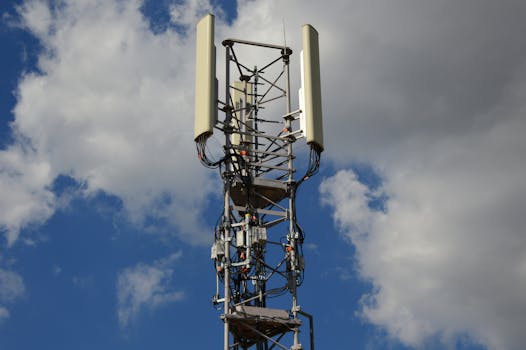
Comparative Analysis of 4G vs 5G Performance Metrics: Understanding the Future of Mobile Networks
Comparative Analysis of 4G vs 5G performance metrics is a crucial aspect of understanding the future of mobile networks. The fifth generation of wireless technology, commonly known as 5G, has been gaining momentum in recent years, promising faster data speeds, lower latency, and greater connectivity. In this article, we will delve into the Comparative Analysis of 4G vs 5G performance metrics, exploring the differences and advancements in mobile network technology.
The introduction of 5G marks a significant milestone in the evolution of mobile networks, offering a range of benefits and improvements over its predecessor, 4G. One of the primary advantages of 5G is its ability to provide faster data speeds, with theoretical peak rates reaching up to 20 Gbps, compared to 4G’s 100 Mbps. This substantial increase in speed enables seamless streaming, faster downloads, and more efficient online experiences.
Performance Metrics: A Comparative Analysis
A comprehensive Comparative Analysis of 4G vs 5G performance metrics is essential to understanding the capabilities and limitations of each technology. Some key performance metrics to consider include data speed, latency, network capacity, and coverage. In terms of data speed, 5G boasts significantly faster upload and download speeds, making it an attractive option for applications that require high-bandwidth, such as online gaming and virtual reality.
Latency, or the time it takes for data to travel from the user’s device to the network and back, is another critical performance metric. 5G reduces latency to as low as 1 ms, compared to 4G’s 50 ms, enabling real-time communication and more responsive applications. Network capacity, which refers to the number of devices that can be supported by the network, is also significantly improved in 5G, with the ability to support up to 1 million devices per square kilometer.
Real-World Applications and Use Cases
The improved performance metrics of 5G have far-reaching implications for various industries and applications. For instance, the faster data speeds and lower latency of 5G enable the widespread adoption of Internet of Things (IoT) devices, such as smart home appliances, wearables, and autonomous vehicles. The enhanced mobile broadband capabilities of 5G also facilitate the growth of online services, such as streaming, gaming, and virtual reality.
In addition, 5G’s ultra-reliable low-latency communication (URLLC) feature makes it an attractive option for mission-critical applications, such as remote healthcare, public safety, and industrial automation. The ability of 5G to support a vast number of devices and provide widespread coverage also enables the development of smart cities, where various infrastructure and services are interconnected and optimized for efficiency.
Challenges and Limitations
While 5G offers numerous benefits and improvements over 4G, there are also challenges and limitations to consider. One of the primary concerns is the cost and complexity of deploying 5G infrastructure, which requires significant investments in new hardware, software, and network architecture. The availability of 5G coverage is also limited in many areas, particularly in rural and underserved regions.
Furthermore, the security of 5G networks is a growing concern, as the increased connectivity and complexity of the network create new vulnerabilities and potential entry points for cyber threats. The management of 5G networks also requires advanced technologies, such as artificial intelligence and machine learning, to optimize performance, detect anomalies, and predict maintenance needs.
In conclusion, the Comparative Analysis of 4G vs 5G performance metrics highlights the significant advancements and improvements in mobile network technology. While 5G offers faster data speeds, lower latency, and greater connectivity, there are also challenges and limitations to consider, such as the cost and complexity of deployment, limited coverage, and security concerns.
As the adoption of 5G continues to grow and expand, it is essential to address these challenges and limitations, investing in infrastructure, research, and development to realize the full potential of this technology. With its vast array of applications and use cases, 5G is poised to revolutionize various industries and aspects of our lives, enabling a more connected, efficient, and responsive world.